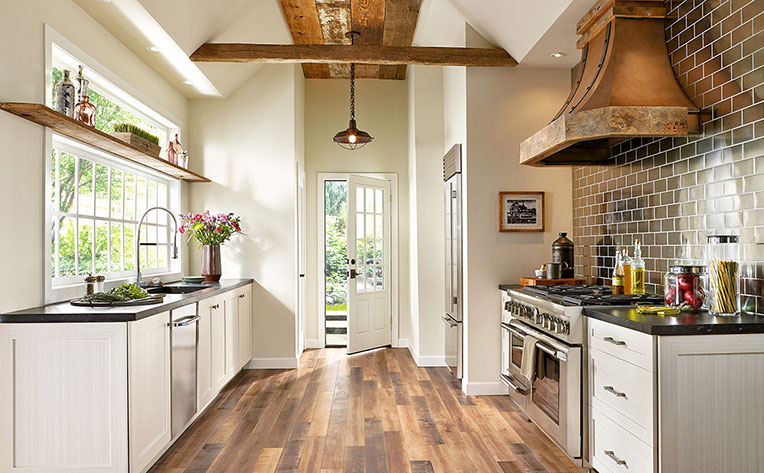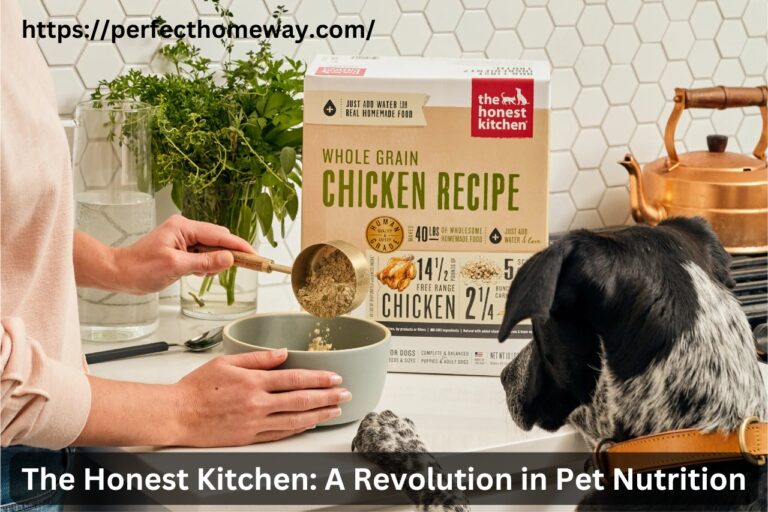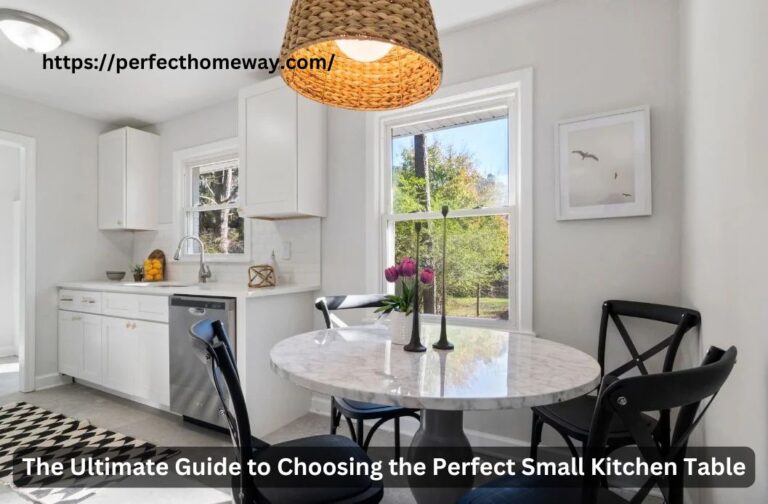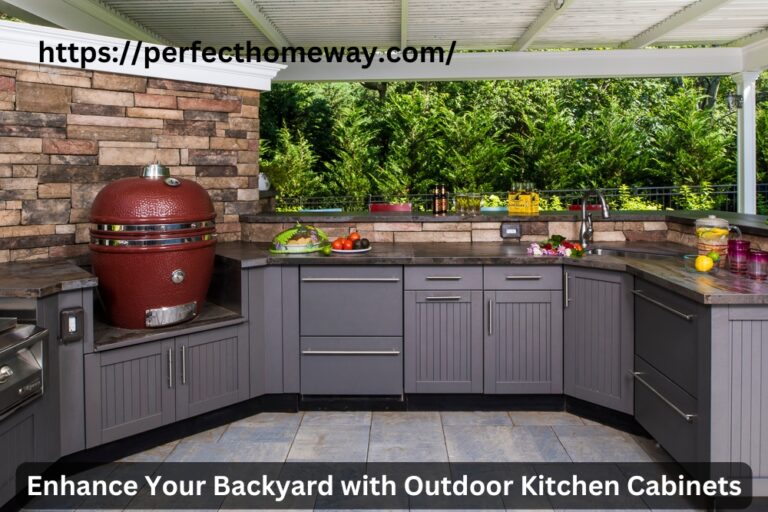The Best Kitchen Flooring Options for Every Home

When it comes to designing a kitchen, the flooring you choose plays a crucial role in both aesthetics and functionality. The right kitchen flooring not only enhances the look of your space but also provides durability to withstand the daily wear and tear of a busy cooking environment. Choosing the best kitchen flooring can be a challenge, given the variety of materials available on the market. In this article, we will explore the top options, along with their pros and cons, to help you make an informed decision for your kitchen.
Factors to Consider When Choosing the Best Kitchen Flooring
Before diving into the different types of kitchen flooring, it’s essential to consider several factors that will affect your decision. These factors include:
- Durability: Kitchen floors need to withstand heavy foot traffic, spills, and dropped objects. The best kitchen flooring should be tough enough to handle these daily challenges.
- Ease of Cleaning: Spills and splashes are inevitable in the kitchen. You’ll want a floor that’s easy to clean and maintain, as this will save you time and effort.
- Aesthetic Appeal: The flooring should complement the overall design and style of your kitchen. Whether you prefer a rustic, modern, or traditional look, there’s a flooring material that can match your vision.
- Comfort: Kitchens are spaces where you often spend long hours cooking and standing. It’s essential that the floor material provides comfort underfoot.
- Cost: Flooring can vary greatly in price. While some materials are more affordable, others may be a higher investment. Consider your budget when deciding on the best kitchen flooring.

Popular Kitchen Flooring Materials
1. Hardwood Flooring: Timeless Elegance
Hardwood is one of the most popular choices for kitchen flooring due to its timeless appeal and natural beauty. It adds warmth to any kitchen space, making it an excellent option for homeowners seeking a classic look. Hardwood is highly durable and can last for many years when properly maintained.
Pros:
- Aesthetic Appeal: Hardwood floors are available in various finishes, colors, and grains, making it easy to match them with your kitchen’s style.
- Durability: When well-maintained, hardwood floors can last a lifetime.
- Adds Value: Hardwood flooring is a high-end option that can increase your home’s value.
Cons:
- Prone to Scratches: While hardwood is durable, it can scratch and dent easily, especially if you have pets or heavy foot traffic.
- Moisture Sensitivity: Hardwood is not the best option for kitchens with high humidity or water exposure, as moisture can warp or stain the wood.
- Maintenance: Hardwood floors require regular cleaning and occasional refinishing to keep them looking their best.
2. Ceramic and Porcelain Tile: Durable and Easy to Clean
Ceramic and porcelain tiles are another excellent option for the best kitchen flooring. These tiles are durable, water-resistant, and easy to clean, making them a popular choice in kitchen design. With various styles, colors, and finishes available, tiles can suit any kitchen theme.
Pros:
- Water-Resistant: Ceramic and porcelain tiles are resistant to moisture, making them ideal for kitchens where spills are common.
- Easy to Maintain: Tiles are simple to clean and don’t require special care.
- Variety of Styles: Available in a wide range of designs, including traditional, modern, or rustic.
Cons:
- Cold and Hard: Tile can be uncomfortable to stand on for long periods, especially in colder weather.
- Grout Lines: Grout can become stained over time and require regular cleaning.
- Slippery When Wet: Tiles can become slippery when wet, which could be a safety concern in a kitchen.
3. Vinyl Flooring: Affordable and Versatile
Vinyl flooring is an affordable and versatile option that works well in almost any kitchen. Available in sheets, planks, or tiles, vinyl offers the appearance of more expensive materials like wood or stone at a fraction of the cost. It’s also available in a variety of designs, making it easy to match your kitchen’s aesthetic.
Pros:
- Budget-Friendly: Vinyl is one of the most affordable options, making it a great choice for those on a budget.
- Water-Resistant: Vinyl is naturally resistant to water, making it perfect for the kitchen environment.
- Variety of Styles: It can mimic the look of wood, tile, or stone, allowing you to achieve different design aesthetics at a lower price point.
Cons:
- Less Durable: Vinyl can wear down more quickly than other materials, especially with heavy foot traffic or sharp objects.
- Can Fade Over Time: Direct sunlight can cause the color of vinyl flooring to fade over time.
- Not Environmentally Friendly: Vinyl is a synthetic material and not as eco-friendly as some other flooring options.
4. Laminate Flooring: Stylish and Cost-Effective
Laminate flooring is another popular choice for homeowners who want the look of hardwood or tile without the associated cost. Laminate is made from composite wood that is laminated with a photographic layer that mimics the appearance of real wood or stone.
Pros:
- Affordable: Laminate is one of the most budget-friendly flooring materials on the market.
- Easy to Clean: Laminate floors are low-maintenance and simple to wipe clean.
- Variety of Styles: Like vinyl, laminate is available in a variety of designs, including wood, tile, and stone looks.
Cons:
- Not as Durable: Laminate floors are more prone to scratching and wear, especially if they aren’t maintained properly.
- Not Water-Resistant: Laminate can warp or swell when exposed to excess moisture, so it may not be the best option for kitchens prone to spills.
- Limited Lifespan: While laminate can last for many years, it may need to be replaced sooner than other flooring types.
5. Natural Stone: Luxurious and Durable
For those who are willing to invest in high-end flooring, natural stone is one of the best kitchen flooring materials available. Options like granite, slate, marble, and travertine offer a sophisticated, timeless look and are incredibly durable.
Pros:
- Durability: Natural stone is extremely tough and can last for decades with proper care.
- Aesthetic Appeal: The beauty of natural stone is unmatched, and each piece has its unique character.
- Adds Value: Stone flooring can increase the resale value of your home due to its luxury appeal.
Cons:
- High Cost: Natural stone is one of the most expensive flooring options, which may not fit within every budget.
- Cold and Hard: Like tile, stone can be uncomfortable to stand on for long periods.
- Requires Maintenance: Stone floors may need sealing to prevent stains and moisture damage.
How to Choose the Best Kitchen Flooring for Your Needs
When deciding on the best kitchen flooring, consider your kitchen’s layout, traffic level, and your budget. If you are looking for something luxurious, natural stone or hardwood may be your best option. However, if you have a tight budget or need something more durable and easy to maintain, vinyl or laminate flooring could be ideal. Ceramic or porcelain tile offers a balance of durability, style, and practicality, making it another great choice.
Ultimately, the best kitchen flooring is the one that fits your lifestyle, design preferences, and budget. It’s important to weigh the pros and cons of each option to ensure it meets your needs for years to come.
Conclusion
Choosing the best kitchen flooring requires a balance of aesthetic appeal, functionality, and cost. Whether you opt for the timeless elegance of hardwood, the low-maintenance benefits of vinyl, or the luxury of natural stone, there are options available to suit every home. By considering the specific needs of your kitchen and lifestyle, you can make an informed decision and enjoy a beautiful, durable floor that complements your space for years to come.






